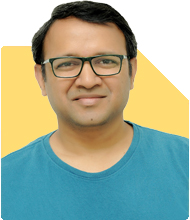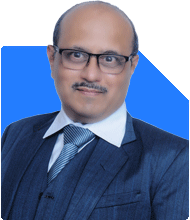Sir my age is 44. If I have to do SIP of 5000 per month to accumulate some corpus. Where should I invest. Please guide
Ans: At the age of 44, you are entering a crucial period for your financial planning. You may have already achieved some financial milestones, but the focus now should be on building a strong corpus for your future. With around 15 years left before traditional retirement age, there’s still time to accumulate wealth through systematic investments.
You’ve mentioned a monthly SIP (Systematic Investment Plan) of Rs 5,000, which is a great step forward. The discipline and consistency of investing monthly will compound over time and help you build a good corpus for your retirement or other financial goals.
Let’s look at how you can optimize this investment, keeping your age, risk tolerance, and future financial needs in mind. It’s essential to approach this with a well-rounded perspective, considering both growth and protection.
Why Goal Setting Is Critical
Setting clear financial goals is the first step in any investment journey. Your Rs 5,000 monthly SIP can work towards multiple goals depending on your priorities. Whether it's for retirement, children’s education, or any other financial objective, having a defined plan will give direction to your investments.
Here’s what you should do:
Identify your goals: List out the financial goals you want to achieve. For instance, retirement, children’s higher education, or buying an asset.
Determine the timeline: Know when you will need the money. This helps in deciding the kind of investments that suit your time horizon.
Estimate the amount: Know how much corpus you’ll need for each goal. This will help you assess if the Rs 5,000 SIP is sufficient or if it needs adjustment over time.
By aligning your SIP investments with your goals, you will have a clear road map. This will not only help you achieve your targets but also guide you in making the necessary adjustments as you move forward.
Evaluating Risk Tolerance and Time Horizon
At 44, you still have a reasonable time horizon to build a meaningful corpus, especially if you aim to retire by 60 or later. However, the closer you get to retirement, the more cautious you need to be with high-risk investments. The idea is to strike a balance between growth and capital protection.
Here’s how to assess your risk tolerance:
Low Risk: If you are risk-averse, a higher allocation to debt-oriented funds and large-cap equity funds would be suitable. This will protect your capital while offering modest growth.
Moderate Risk: If you are open to some volatility, consider a balanced approach with exposure to mid-cap funds and hybrid funds. This will give you a mix of safety and growth potential.
High Risk: If you are comfortable with market fluctuations and aim for higher returns, you can include small-cap funds or sector-specific funds. This approach is only recommended if you have other stable investments.
While deciding on your risk profile, remember that market volatility is part of investing. Over the long term, equity funds tend to offer superior returns compared to fixed income instruments, but they come with ups and downs. Your time horizon plays a crucial role here—longer periods allow for market corrections, which can benefit equity investors.
Active Funds Over Index Funds
While many investors are drawn to index funds because of their low cost, it’s important to understand the limitations of passive investing, especially in the Indian market. Index funds simply mirror the performance of a market index, like the Nifty or Sensex. However, they don’t offer the flexibility or the potential for outperformance that actively managed funds do.
The key disadvantages of index funds include:
Limited ability to outperform: Since index funds replicate the market, their performance is capped at market returns. If the market performs poorly, so will the fund.
No active management: Index funds don’t benefit from a fund manager’s expertise. An actively managed fund allows a skilled fund manager to choose stocks based on growth potential, thereby having the ability to outperform the market.
Sector biases: Indian indices often have significant sectoral biases. For instance, the financial sector has a considerable weight in most Indian indices. This could overexpose your portfolio to certain sectors without offering flexibility.
Actively managed funds, on the other hand, allow fund managers to make informed decisions based on market conditions. These funds aim to outperform the market by selecting high-potential stocks or sectors and making adjustments as required.
Therefore, I recommend focusing on actively managed funds for your SIP investments. With the expertise of a fund manager, actively managed funds offer better prospects for achieving your financial goals.
Regular Funds vs Direct Funds
Another point to consider is whether to invest through regular funds or direct funds. While direct funds have lower expense ratios, they come with certain disadvantages. Direct funds require you to manage your investments entirely on your own, without professional guidance. For investors who are not financial experts, this can be risky.
Let’s look at the benefits of choosing regular funds:
Professional Advice: Investing through regular funds gives you access to advice from a Certified Financial Planner (CFP). A CFP can help you select the right funds, based on your financial goals, risk tolerance, and market conditions.
Portfolio Management: A CFP will help you monitor and rebalance your portfolio regularly. This ensures that your investment strategy remains aligned with your evolving financial needs.
Holistic Approach: A CFP offers a 360-degree view of your finances, considering not only your SIPs but also your overall investment portfolio, tax planning, and insurance needs.
While direct funds may seem cost-effective, the lack of professional guidance can be a major drawback. The expertise of a CFP can help you navigate market complexities and ensure that your investments remain on track.
Fund Categories for Your SIP
Now, let’s explore the different categories of mutual funds where you can allocate your Rs 5,000 SIP. Diversifying your investment across different types of funds will help manage risk and enhance returns.
1. Large-Cap Funds
These funds invest in well-established companies with strong track records. Large-cap funds are relatively stable and less volatile compared to mid-cap or small-cap funds. They offer moderate returns but are ideal for risk-averse investors who prioritize capital protection.
Why consider large-cap funds? These funds provide stability and are less impacted by market volatility. They should form the core of your portfolio.
2. Flexi-Cap Funds
Flexi-cap funds offer the flexibility to invest across large-cap, mid-cap, and small-cap companies. This gives fund managers the freedom to pick the best opportunities in the market. These funds provide a balance of risk and reward.
Why flexi-cap funds? They offer diversification across different market caps and sectors, which helps in managing risk.
3. Mid-Cap Funds
Mid-cap funds focus on medium-sized companies that have significant growth potential. While they are more volatile than large-cap funds, they offer higher returns over the long term. These funds are suitable for investors with moderate risk tolerance.
Why mid-cap funds? Mid-cap companies often offer better growth opportunities and can outperform large-cap companies in a bullish market.
4. Hybrid Funds
Hybrid funds invest in a mix of equity and debt instruments, which helps balance risk and return. These funds are ideal for investors looking for stability with some exposure to equities.
Why hybrid funds? They provide a cushion during market downturns, as the debt portion of the portfolio offers protection against volatility.
Suggested SIP Allocation
Here’s a suggested allocation for your Rs 5,000 monthly SIP based on the categories discussed above:
Rs 2,000 in Large-Cap Funds: Stable and steady returns, suitable for the core part of your portfolio.
Rs 1,500 in Flexi-Cap Funds: Exposure to multiple market caps, offering a good mix of risk and reward.
Rs 1,000 in Mid-Cap Funds: For higher growth potential and capital appreciation over the long term.
Rs 500 in Hybrid Funds: A balanced approach to mitigate risk while still offering some growth.
This diversified allocation will help manage risk effectively while giving you the opportunity for good long-term returns.
Tax Efficiency
Tax planning is an essential aspect of any investment strategy. Different types of mutual funds are taxed differently, so it’s important to plan your withdrawals to minimize tax liability.
Equity Funds: Long-term capital gains (LTCG) on equity mutual funds are taxed at 12.5% on gains above Rs 1.25 lakh in a financial year. Short-term capital gains (STCG) are taxed at 20%.
Debt Funds: Both LTCG and STCG from debt mutual funds are taxed as per your income tax slab.
By understanding how your mutual funds are taxed, you can plan your withdrawals efficiently to maximize post-tax returns.
The Importance of Reviewing and Monitoring
Simply starting a SIP is not enough. To ensure that your investment strategy stays on track, regular monitoring and review are essential. Market conditions and your personal financial situation can change, so it’s important to adjust your portfolio accordingly.
Review your portfolio at least annually: This helps you identify underperforming funds and make necessary changes.
Rebalance your portfolio: Over time, certain funds may grow faster than others, skewing your asset allocation. Rebalancing ensures that your portfolio remains aligned with your risk profile.
Consult a Certified Financial Planner: A CFP can help you monitor your portfolio and suggest adjustments based on market conditions and your evolving financial goals.
Emergency Fund: The Safety Net
Before you invest aggressively in SIPs, ensure that you have an emergency fund in place. An emergency fund should cover at least 6 to 12 months of your living expenses. This will act as a safety net in case of unexpected financial needs, allowing you to continue your SIPs without disruption.
Where to park your emergency fund? Liquid funds or ultra-short-term debt funds are ideal for emergency savings. They offer higher returns than savings accounts and provide liquidity when needed.
Final Insights
At 44, you are at a pivotal stage in your financial journey. Your decision to start a monthly SIP of Rs 5,000 is commendable, but it’s essential to approach it with a strategic plan. By diversifying across different categories of mutual funds, aligning your SIPs with your financial goals, and seeking professional advice, you can build a solid foundation for your future.
Remember, consistency and discipline are the keys to successful investing. As you move forward, ensure that you review your portfolio regularly, stay informed about market trends, and make adjustments as necessary.
With a well-planned approach, your SIP can help you achieve your financial aspirations and secure a comfortable future for you and your family.
K. Ramalingam, MBA, CFP
Chief Financial Planner,
www.holisticinvestment.in
https://www.youtube.com/@HolisticInvestment




























